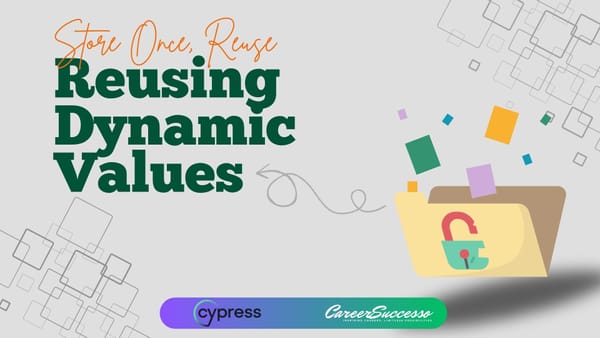Getting Started in IT: A Simple Guide to Kickstarting Your Career

Embarking on a journey in Information Technology (IT) is not just stepping into a career, it's entering a realm of boundless opportunities and promising prospects for IT career success. As technology becomes increasingly ingrained in every facet of modern existence, the demand for proficient IT professionals is skyrocketing, creating a landscape brimming with potential.
Whether you're a newcomer to the IT field, a fresh graduate eager to dive into the tech world, a seasoned professional seeking a career transition, or someone simply looking to enhance their IT skill set, the IT industry beckons with a wealth of avenues for growth, innovation, and professional fulfillment in your IT career.
In this comprehensive guide, we'll illuminate the essential steps you must undertake to not just initiate but orchestrate a trajectory of enduring career success in IT.
Establishing a Strong Foundation
Understanding the Basics of Computer Science
At the core of every successful IT career lies a solid foundation in computer science fundamentals. From algorithms and data structures to computational thinking and problem-solving techniques, these core concepts serve as the building blocks upon which you'll construct your IT expertise.
Here's how to get started on your journey:
- Master the Basics: Focus on core computer science concepts like algorithms, data structures, computational thinking, and problem-solving techniques.
- Explore Online Resources: Utilize online courses, textbooks, and educational platforms like Udemy, Coursera, edX, and Khan Academy for beginner-friendly resources.
- Build a Strong Theoretical Foundation: Grasping the theoretical underpinnings of computer science is crucial before diving into practical applications.
Mastering a Programming Language
Proficiency in at least one programming language is essential for an IT career. The specific language you choose depends on your career goals and interests, but popular options include Python, Java, JavaScript, and C++.
Here's how to become a master programmer:
- Choose Your Weapon: Select a programming language aligned with your IT career goals (e.g., Python for data science, Java for Android development).
- Deep Dive into the Language: Immerse yourself in learning the syntax, semantics, and best practices of your chosen language.
- Level Up Your Skills: Utilize online tutorials, coding challenges, and interactive coding platforms like Codecademy and LeetCode to refine your programming skills.
- Think Like a Programmer: Go beyond writing code and develop the ability to solve complex problems systematically using a programmer's mindset.
Embracing the Theory of Version Control
In collaborative software development environments, version control systems (VCS) are essential for managing codebases, tracking changes, and facilitating seamless team collaboration. Git, in particular, has become the industry standard VCS due to its flexibility and powerful features.
Master Version Control with Git:
- Understanding VCS: Familiarize yourself with the core concepts of version control systems, including their role in software development.
- Git for Developers: Learn Git's core functionalities like repositories, branches, commits, and merges. Explore online tutorials, documentation, and hands-on practice resources.
- Git Sandbox Environment: Experiment with Git commands in a safe, isolated environment to gain confidence in using it effectively.
- Benefits of Version Control: Mastering version control, whether working solo or collaboratively, streamlines workflows and enhances developer productivity.
Expanding Your Knowledge and Skills
Leveraging Coding Bootcamps for Intensive Learning
Coding bootcamps have become a popular choice for individuals seeking a fast-track entry into IT careers compared to traditional education paths. These immersive programs offer hands-on learning focused on practical skills and real-world applications.
Choosing the Right Coding Bootcamp:
- IT career fast track: Explore coding bootcamps as an alternative to traditional education for an IT career.
- Coding bootcamp curriculum: Research different bootcamp options based on curriculum content, covering specific technologies or offering a broader IT skillset.
- Coding bootcamp duration: Consider the program length to fit your learning timeline.
- Coding bootcamp cost: Factor in tuition fees when making your decision.
- Coding bootcamp alumni outcomes: Research the success rates and career placements of bootcamp graduates.
- Learning style and career goals: Align your learning preferences (hands-on vs theoretical) and career aspirations with the bootcamp's focus.
- Coding bootcamp budget: Choose a bootcamp that aligns with your financial resources.
Additional Considerations:
- Dedication and Perseverance: Remember, bootcamps require commitment and a strong work ethic for accelerated learning.
Enrolling in Online Courses for Specialized Learning
Online courses serve as a complementary learning path to coding bootcamps, offering a flexible and accessible way to specialize in specific IT domains. Platforms like Udemy, Pluralsight, and Udacity provide a vast course library covering in-demand topics like:
- Web development courses
- Cybersecurity courses
- Cloud computing courses
- Machine learning courses
- IT certification courses (mention specific certifications if relevant)
Upskilling and Reskilling with Online IT Courses:
- Deepen Your IT Knowledge: Utilize online courses to gain expertise in specific areas of the IT field that align with your interests.
- Explore Emerging Technologies: Stay ahead of the curve by delving into courses on cutting-edge IT advancements.
- Prepare for IT Certifications: Utilize online courses to prepare for industry-recognized IT certifications that validate your skills.
- Flexible Learning at Your Pace: Benefit from self-paced learning modules, interactive exercises, and hands-on projects to solidify your understanding and track progress conveniently.
Engaging in Practical Projects for Hands-On Experience
Understanding IT concepts is crucial, but true mastery comes through applying them in practice. To solidify your learning and showcase your abilities, engage in hands-on projects that simulate real-world IT scenarios. Consider these options:
- Build a Web Application: Develop a web app to demonstrate your web development skills (e.g., portfolio website, e-commerce platform).
- Develop a Mobile App: Create a mobile app to showcase your mobile development expertise (e.g., productivity tool, game).
- Contribute to Open-Source Projects: Collaborate on open-source projects to gain experience in real-world codebases and contribute to the developer community.
Benefits of IT Project-Based Learning:
- Solidify IT Skills: Apply theoretical knowledge by building practical projects that reinforce your understanding.
- Showcase Your Skills & Creativity: Impress potential employers with a portfolio of projects demonstrating your capabilities and ingenuity.
- Problem-Solving & Collaboration: Develop problem-solving skills and learn to collaborate effectively on projects.
- Deliver Tangible Results: Showcase your ability to deliver concrete solutions through completed projects.
- Step Outside Your Comfort Zone: Challenge yourself with projects that push your limits and expand your knowledge base.
- Continuous Learning & Growth: Every project is a valuable learning experience, fostering continuous growth throughout your IT career.
Cultivating Essential Soft Skills
Mastering Effective Communication: A Cornerstone IT Skill
Effective communication is not just a soft skill; it's a crucial competency for IT professionals. From collaborating with teammates to presenting complex solutions to clients, the ability to articulate ideas clearly and concisely is paramount.
Developing Strong Communication Skills in IT:
- Articulating Technical Concepts: Practice explaining technical concepts in a way that is easy for non-technical audiences to understand.
- Active Listening: Hone your active listening skills to effectively grasp feedback and ensure clear understanding.
- Seeking Clarification: Don't hesitate to ask clarifying questions to avoid misunderstandings.
- Written Communication Skills: Develop strong written communication skills for emails, reports, and technical documentation.
- Audience-Tailored Communication: Adapt your communication style to resonate with your audience and ensure alignment.
Fostering Collaboration and Teamwork: Powering Success in IT
IT projects are rarely one-person shows. Collaboration and teamwork are the engines driving success in most IT endeavors. Here's how to excel in collaborative environments:
- Effective Communication & Active Listening: Practice active listening and foster open dialogue to ensure clear communication within your team.
- Respecting Diverse Viewpoints: Value different perspectives and encourage healthy debate to arrive at optimal solutions.
- Teamwork Skills: Develop your ability to work effectively in teams by embracing opportunities for:
- Leadership: Taking initiative and leading projects or subtasks.
- Task Delegation: Assigning tasks strategically to leverage team member strengths.
- Supporting Teammates: Providing assistance and fostering a supportive environment.
Building a High-Performing IT Team:
- Shared Goals and Trust: Align team members around common goals and build trust through open communication.
- Camaraderie: Foster a sense of camaraderie within the team to promote collaboration and motivation.
- Collective Strengths: Leverage the collective strengths of your team to deliver exceptional results that surpass individual capabilities.
Cultivating Problem-Solving and Critical Thinking Skills: Essential for IT Professionals
In the dynamic world of IT, problem-solving and critical thinking are not just desirable skills, they're essential for success. From troubleshooting complex issues to designing innovative solutions, IT professionals leverage these abilities daily.
Sharpening Your IT Problem-Solving Skills:
- Analytical and Creative Thinking: Effectively analyze problems, explore creative solutions, and evaluate their potential impact.
- Decomposing Complex Problems: Break down intricate challenges into manageable components for efficient problem-solving.
- Growth Mindset for IT: Embrace continuous learning and view challenges as opportunities to learn and grow.
- Learning from Failure: See setbacks as stepping stones to success, fostering resilience and improvement.
Conclusion
Launching Your IT Career with Confidence
Embarking on a career in IT is an exhilarating adventure filled with opportunities for growth, exploration, and innovation. By following the key steps outlined in this guide, you'll be well-equipped to launch a successful IT career. Here's a quick recap:
- Solid Foundation in Computer Science: Gain a strong understanding of computer science fundamentals.
- Master Programming Languages: Proficiency in programming languages is essential.
- Embrace Version Control Systems: Git is an industry-standard version control tool.
- Upskill with Coding Bootcamps and Online Courses: Utilize these resources to expand your knowledge and specialize in specific areas.
- Hands-on Learning Through Projects: Solidify your understanding with practical projects that showcase your skills.
- Develop Essential Soft Skills: Communication, teamwork, and problem-solving are crucial for success.
- Lifelong Learning Mindset: Stay curious, keep experimenting, and embrace continuous learning.
Remember, success in IT is a journey, not a destination. With dedication, a passion for technology, and the willingness to learn and adapt, you'll be well on your way to achieving your IT career goals.





